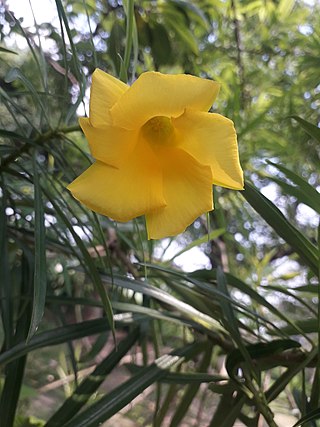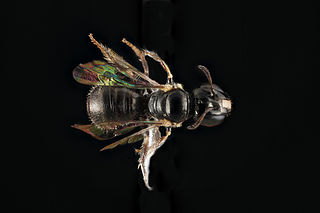Oleander is a post-grunge band from Sacramento, California, US. Its name is derived from the poisonous flowering shrub oleander, which line the highways of Northern California. In their nine years of activity, the band released four studio albums under various record labels. Their most successful effort, 1999's February Son, includes the hit single "Why I'm Here." Oleander went on official hiatus after the release and promotion of their third album, Joyride, in 2004. The band took some time off, but reunited in 2008, and began work on their album Something Beautiful, which was released on April 16, 2013.

Nerium oleander, commonly known as oleander or rosebay, is a shrub or small tree cultivated worldwide in temperate and subtropical areas as an ornamental and landscaping plant. It is the only species currently classified in the genus Nerium, belonging to subfamily Apocynoideae of the dogbane family Apocynaceae. It is so widely cultivated that no precise region of origin has been identified, though it is usually associated with the Mediterranean Basin.

Apocynoideae is a subfamily of the flowering plant family Apocynaceae, also called the 'dogbane' or milkweed family, containing about 860 species across 78 genera. Several are of pharmacological interest; Strophanthus has furnished highly effective arrow poisons, due to their cardiac glycoside content. Apocynoideae also includes many popular landscaping and ornamental species, one of the best-known, and most infamous, being the oleander ; the subfamily also contains remarkable pachycaul genera like Adenium and Pachypodium.

Diaspididae is the largest family of scale insects with over 2650 described species in around 400 genera. As with all scale insects, the female produces a waxy protective scale beneath which it feeds on its host plant. Diaspidid scales are far more substantial than those of most other families, incorporating the exuviae from the first two nymphal instars and sometimes faecal matter and fragments of the host plant. These can be complex and extremely waterproof structures rather resembling a suit of armor. For this reason these insects are commonly referred to as armored scale insects. As it is so robust and firmly attached to the host plant, the scale often persists long after the insect has died.

Cascabela thevetia is a poisonous plant native throughout Mexico and in Central America, and cultivated widely as an ornamental. It is a relative of Nerium oleander, giving it a common name yellow oleander.

Pseudaulacaspis pentagona, the white peach scale or mulberry scale, is a species of armoured scale insect in the family Diaspididae. This scale infests over 100 different genera of plants including many fruit trees and ornamentals.

Pseudaulacaspis is a genus of scales and mealybugs in the family Diaspididae. There are at least 60 described species in Pseudaulacaspis.
Merhynchites is a genus of leaf and bud weevils in the beetle family Attelabidae. There are about 12 described species in Merhynchites.

Dichorda rectaria is a species of emerald moth in the family Geometridae. It is found in North America.

Merhynchites bicolor, the rose curculio, is a species of leaf rolling weevil in the beetle family Attelabidae. It is found in North America.

Ceratina cockerelli is a species of small carpenter bee in the family Apidae. It is found in the Caribbean Sea and North America.

Chilocorus cacti, known generally as the cactus lady beetle or the twice-stabbed cactus lady beetle, is a species of lady beetle in the family Coccinellidae. It is native to the Caribbean region, North America, Central America, and South America. The adults and larvae feed on scale insects and attempts have been made to use it for biological pest control.
Herpyllus cockerelli is a species of ground spider in the family Gnaphosidae. It is found in the United States and Mexico.

Ammoplanops is a genus of aphid wasps in the family Ammoplanidae. There are about 15 species described in the genus Ammoplanops.
Orectoderus is a genus of plant bugs in the family Miridae. There are about 10 described species in Orectoderus.
Xestoleptura cockerelli is a species of flower longhorn in the beetle family Cerambycidae. It is found in North America.
Lestiphorus cockerelli is a species of sand wasp in the family Bembicidae. It is found in North America.

Lestiphorus is a genus of sand wasps in the family Bembicidae. There are about 18 described species in Lestiphorus.
Protandrena cockerelli is a species of bee in the family Andrenidae. It is found in North America.











